
Tips for WooCommerce Conversion Rate Tracking
Intro
Continuously optimizing your website is crucial to leading a successful WooCommerce business. You will need to approach it strategically to get most of your eCommerce conversion rate optimization.
In this post, we will help you do just that, covering everything from setting up conversion rates tracking tools to outlining the most important metrics to follow.
We will also suggest essential ways to improve your conversion rates.
But first things first:
What is Conversion Rate Tracking?
The conversion rate is the percentage of a website’s visitors that take a desirable action. The desirable action varies depending on the site type, including downloading material, registering, subscribing to an email list, etc.
In the case of eCommerce businesses, the desirable action is the visitor purchasing a product. When running a WooCommerce store, the conversion rate represents the percentage of your store’s visitors who buy.
The conversion rate percentage is calculated by dividing the number of purchases by the number of visitors and multiplying it by 100%.
Conversion rate = Number of conversions / Total number of visitor x 100
Conversion rate tracking gives insight into your website’s effectiveness in turning visitors into customers; the conversion rate is an essential metric for every WooCommerce store owner.
For example, a low conversion rate may indicate problems with product pages, UX design, or website performance. By giving you insight into a potential web store’s problems, conversion rate tracking helps you increase revenue by understanding your website’s pain points and optimizing your conversion rates based on the data.
Why is Tracking Conversion Important?
1. Performance monitoring
Tracking your WooCommerce website’s conversion rates gives you valuable insights into the following:
- your website’s design
- customer preferences and
- enables you to make data-driven decisions.
For example, continuous website performance monitoring can help you test the effectiveness of your CTA (call to action) button redesign or estimate the reasons behind high bounce rates.
2. Understanding your customers
Tracking your website’s conversion rates lets you understand your customers’ behavior.
Analytics gives you valuable insight into your customers’ behavior, enabling you to optimize your store to achieve conversions. For example, suppose your discount campaign A has increased your conversion rate while campaign B did not. You can analyze the first one, conclude what works for your target audience, and use your findings to inform your next discount campaign.
Website analytics also give you an insight into where customers bounce during their customer journey. By addressing potential issues based on the data, you can improve this process and tailor your website’s user experience to suit your customers better.
3. A/B testing
Conversion rate tracking enables effective A/B testing.
A/B testing is a way of evaluating what functionality or design resonates with website visitors. It lets you test different website elements and track how solutions affect conversion rates.
For example, testing the color of a CTA button by duplicating the same pages with only one element changed may show an increase or decrease in conversion rates. When tracking data through your website’s analytics or an A/B testing tool, you can determine the best solutions for your customers by dividing your traffic into two groups and comparing the effects of CTA changes on your conversion rates.
A/B testing, of course, is not limited to CTA. It includes testing all parts of your funnel, including copy, product pages, checkout pages, and other elements. Tracking conversion rates while changing any of your website elements and functionalities will give you an insight into the effectiveness of your new solution.
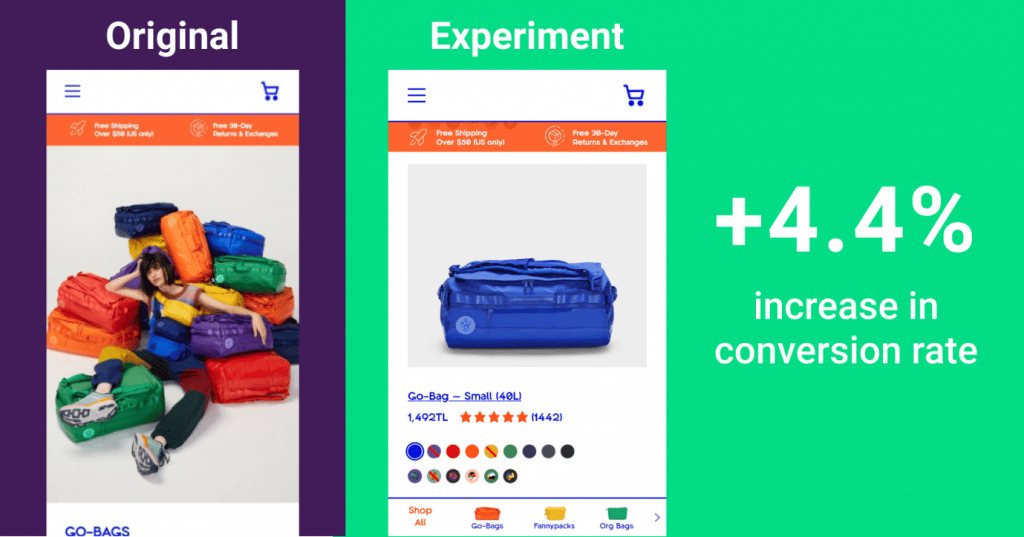
Source: https://www.figpii.com/blog/10-successful-ecommerce-a-b-test-examples/
4. Decision-making
Tracking conversion rates and other analytics of your WooCommerce store provides you with numeric data and enables you to make more informed decisions. It can help you make informed decisions about various aspects of your eCommerce business.
For example, consider improving the grid layout if you experience high bounce rates on your product listing page. If your customers bounce on the product pages, you can experiment with adding better product pictures, improving descriptions, or redesigning your CTA button.
Once you have made the adjustments, you can evaluate their effect on your conversion rates and improve upon successful solutions.
5. Budget
Tracking conversion rates and other metrics helps you reduce costs. Assessing the effectiveness of different solutions you implement enables you to make better financial decisions. Keeping track of how different solutions affect your conversion rates will allow you to focus on those that increase your revenue while cutting costs on ineffective solutions.
For example, you can deduce that traffic from a particular social network adds results in the highest conversion and focus your promotional efforts there.
Emphasizing the most effective solutions will also enable you to generate more revenue from the same traffic. Thus, you can increase your ROI and get the most out of your marketing budget.
In addition to reducing marketing costs, tracking and optimizing your WooCommerce store’s conversion rates may give you an advantage in highly competitive markets.
What is a reasonable conversion rate?
It is helpful to know the average conversion rates before starting to track and estimate your conversion rate success. This data will enable you to assess how you stand compared to the average conversion rates and give you an overview of which areas of your eCommerce business to focus on.
According to data, the general average conversion rate was 3.68%, while the average eCommerce conversion rate was 1.64% in 2023.
However, the average conversion rate varies depending on industry, device, and conversion type.
When industries are concerned, the average conversion rates are:
- Food and beverage: 4%
- Healthcare: 3.2%
- Health and beauty: 3.1%
- Beauty and skincare: 2.7%
- General footwear: 2.7%
- Active apparel: 2.4%
- General apparel: 2.3%
- Beauty and makeup: 2.2%
- All verticals: 2.2%
- Sporting goods: 2.1%
- Electronics: 2.1%
- Active footwear: 1.9%
- Toys and learning: 1.7%
- Home decor: 1.5%
- Luxury apparel: 1.2%
- Home appliances: 1.1%
- Handbags and Luggage: 1.1%
- Luxury handbags: 0.9%
- Furniture: 0.7%
Conversion rates also depend on the device. According to Statista, at the end of 2023, the average conversion rates for tablets were 2.8%, 2.5% for desktops, and 2.1% for mobile devices.
TIPS:
- If your conversion rate lags behind your industry average, consider focusing your marketing efforts on landing page optimization, including CRO, content optimization, SEO, etc.
- Pay attention to mobile devices. If your mobile device conversion rate is below the industry average, consider making your store more mobile-friendly and focusing on mobile CRO.
- Look at other factors influencing the conversion rate, such as cart abandonment, bounce rates, and exit rates, to get an insight into what aspects of your WooCommerce store.
How to Track Conversion Rates?
Before you start comparing your conversion rate with the industry average and creating your CRO strategy, you will need to track your site’s analytics.
In this section, we will work you through installing and configuring the most popular website analytics tool, Google Analytics, and MonsterInsights Google Analytics WordPress plugin.
1. Set up Google Analytics:
a. Create a Google Analytics account on the Google Analytics page if you don’t have one.
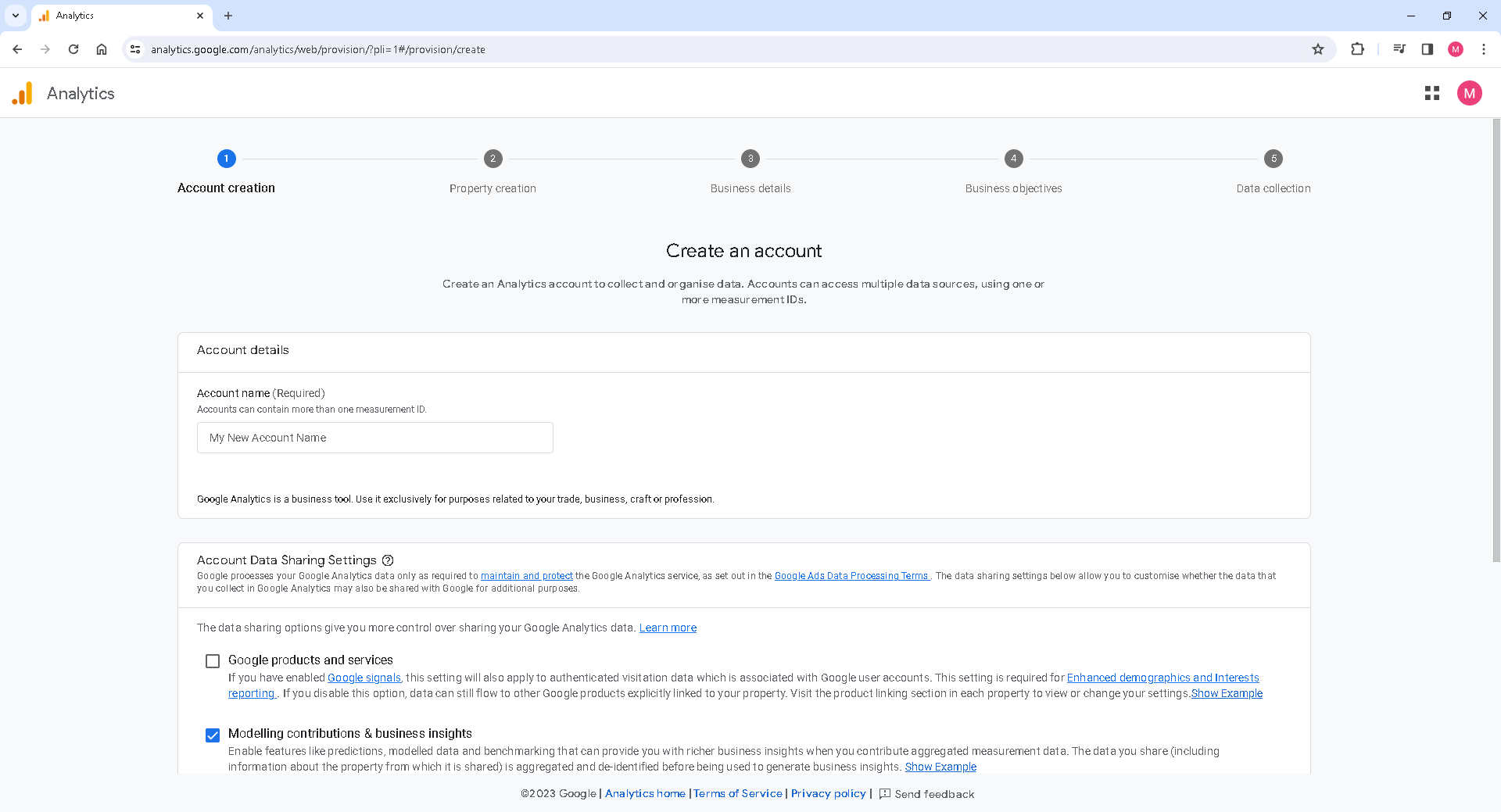
b. Create a new property.
Click the Admin panel in the Google Analytics dashboard to open the Admin panel. In the Property column, select Create Property. Set “Website” as the property type, paste the URL of your WooCommerce store, and press Create.
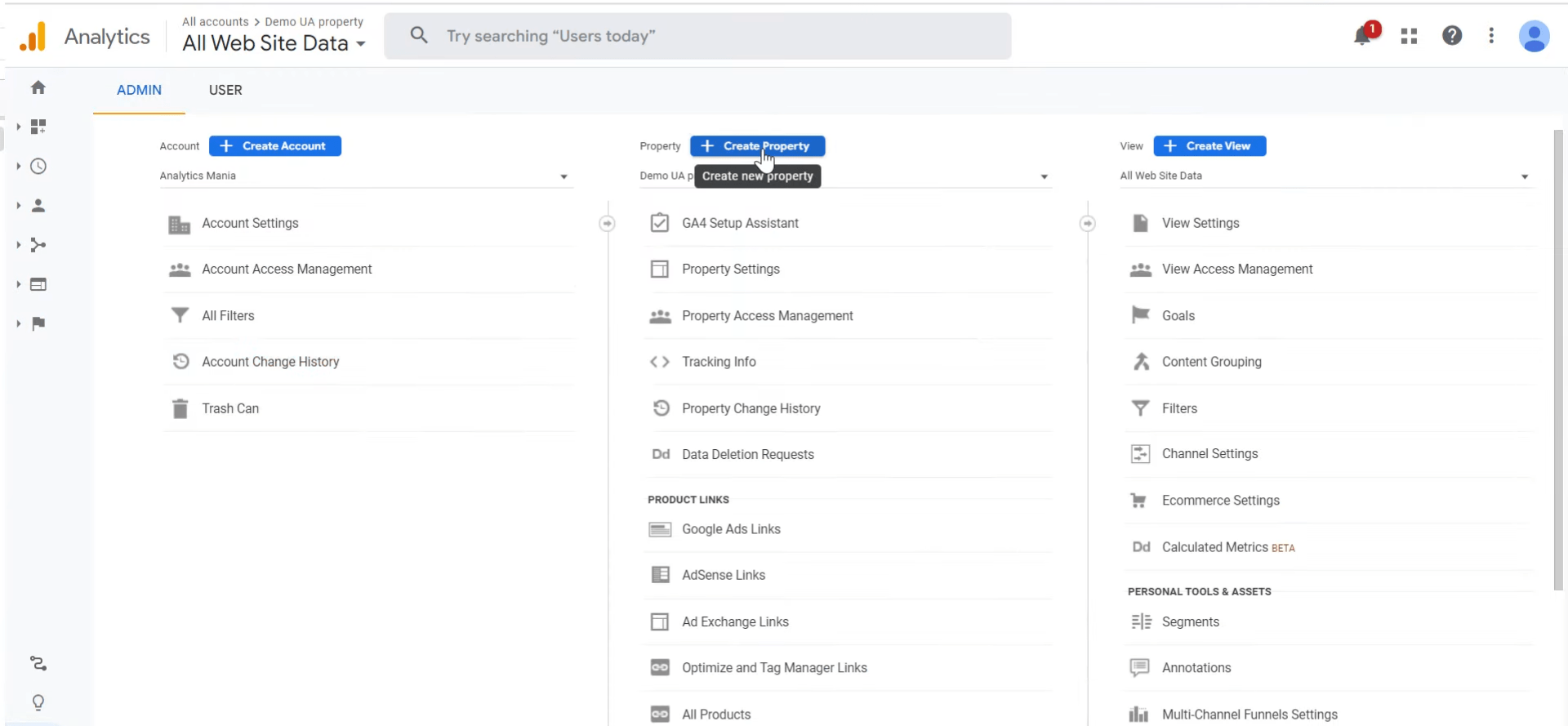
Src: screenshot from https://www.youtube.com/watch?v=xvt9x2lm5vw
2. Set tracking in WordPress
You must add GA code to your website to track your WooCommerce analytics within the WordPress Admin panel. You can do that manually (not recommended if you are not a professional WP developer) or install a plugin that connects Google Analytics and your WooCommerce store. We will show you how to add the GA script by installing and configuring the most popular Google Analytics plugin, MonsterInsights.
a. Installing MonsterInsights:
Install MonsterInsights plugin 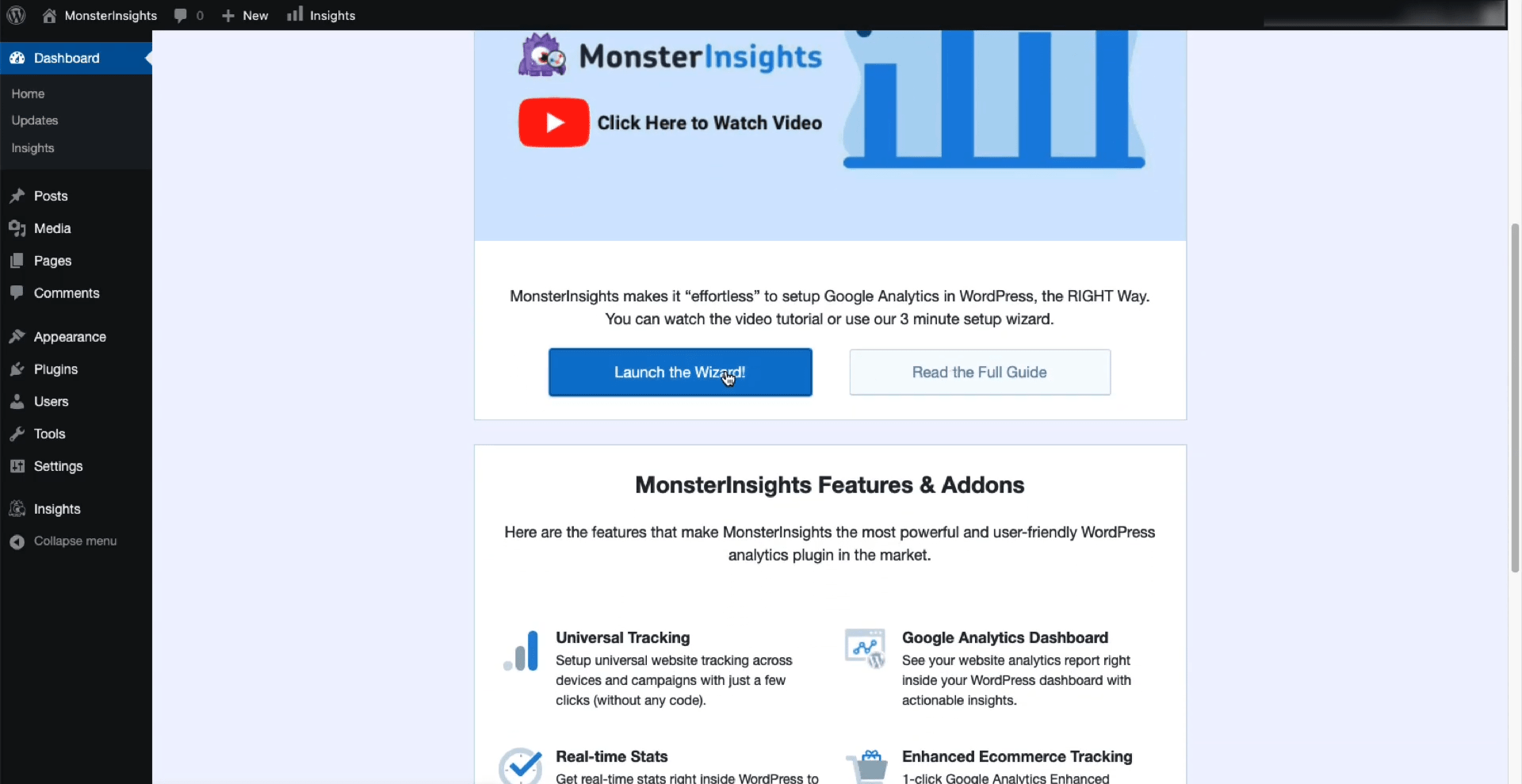 Source: Screenshot taken from https://www.youtube.com/watch?v=-ahH2QoIORQ
Source: Screenshot taken from https://www.youtube.com/watch?v=-ahH2QoIORQ
Navigate to the MonsterInsights section in your Admin dashboard
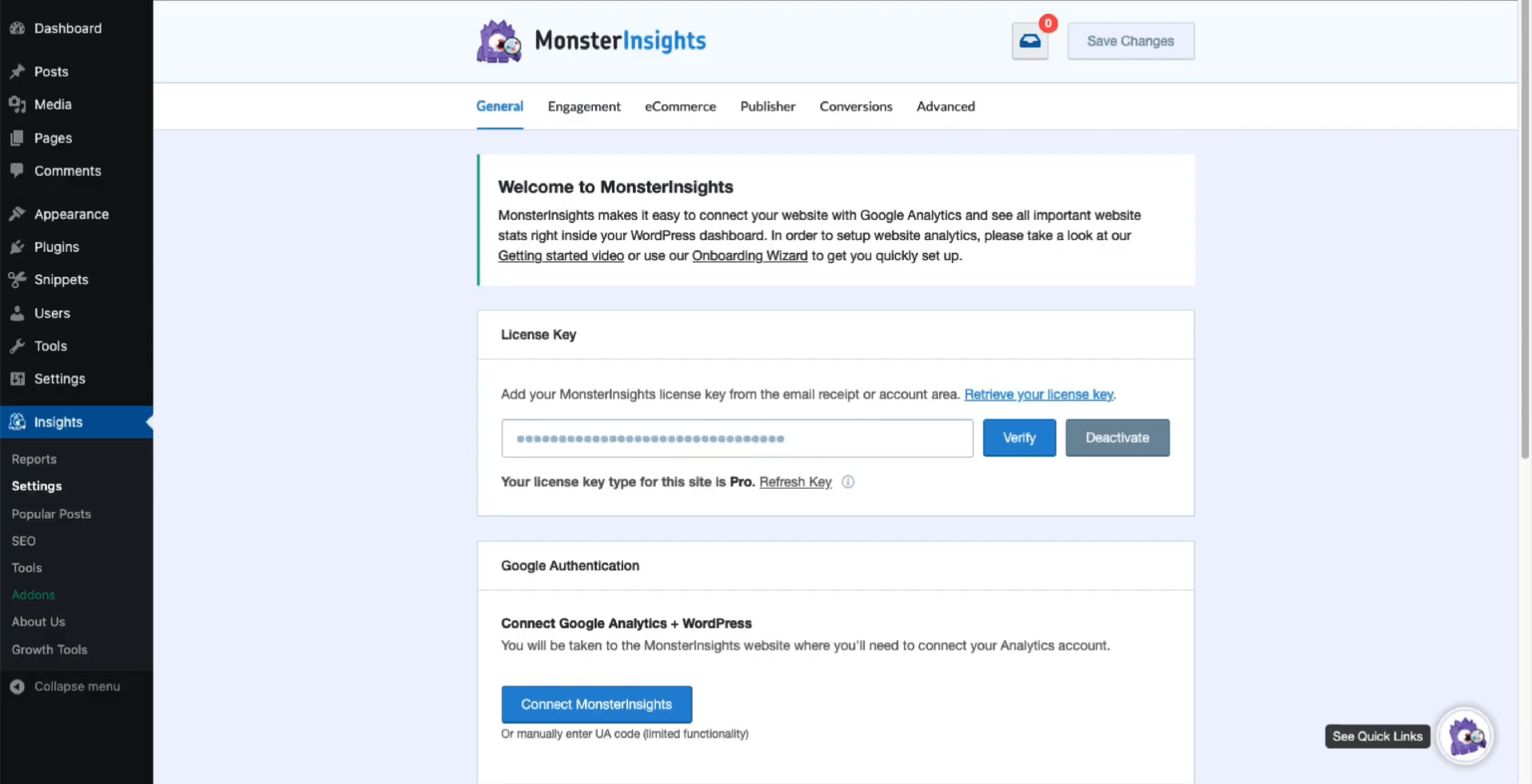 Src: Screenshot taken from https://www.youtube.com/watch?v=-ahH2QoIORQ
Src: Screenshot taken from https://www.youtube.com/watch?v=-ahH2QoIORQ
Connect MonsterInsights with your Google account 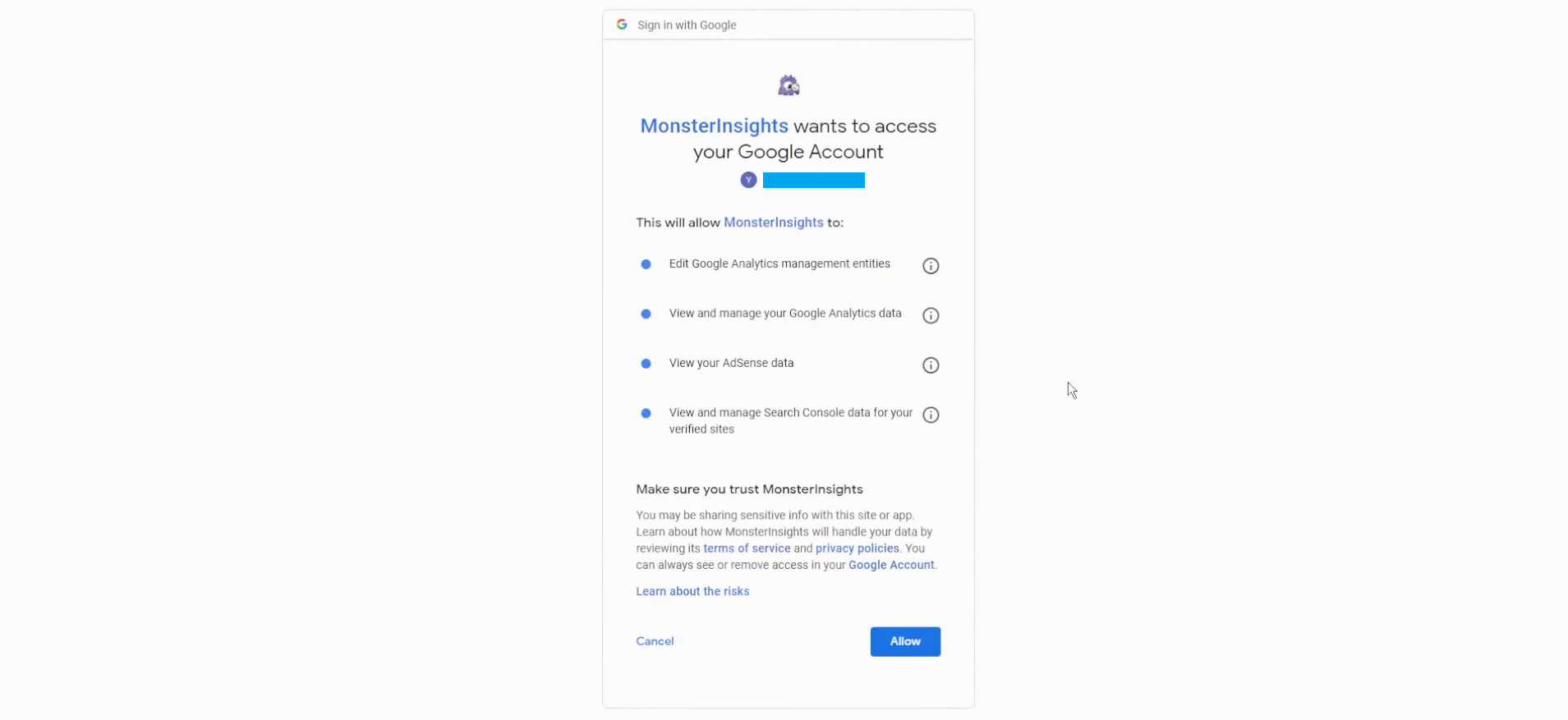 Src: screenshot from https://www.youtube.com/watch?v=pGKY9dBrrxU, cropped and edited
Src: screenshot from https://www.youtube.com/watch?v=pGKY9dBrrxU, cropped and edited
- Enable tracking
- Enable Enhanced eCommerce
- Save changes
3. Check if tracking is working.
You can check whether the tracking works by making a test order in your store.
After you have made an order, wait for a few hours. Then, open Google Analytics and navigate to Conversions> Ecommerce> Overview.
If everything is working correctly, you should see your order data.
KPIs And How To Track Them:
This section will outline key performance indicators and give tips on improving your WooCommerce store conversions based on the date.
KPIs may include:
1. Sales Conversion Rate
The Conversion rate is one of the essential metrics you should follow to maximize your WooCommerce store’s revenue.
As we previously mentioned, the conversion rate is the percentage of your website’s visitors that take a desirable action (buy your product in case of an eCommerce store). To calculate the conversion rate, use the following formula:
Number of conversions(sales)/ number of visitors x 100.
Tracking the conversion rate lets you compare your conversions with the industry average and illuminates which areas you should improve. For example, if you are experiencing below-average conversion rates on mobile devices, you should prioritize responsive design, webshop speed, or mobile CRO to increase revenue.
Tracking conversion rates also enables you to assess the effectiveness of changes made to your store and the success of your marketing campaigns.
2. Shopping Cart Abandonment Rate
The next important metric to follow is the cart abandonment rate. The cart abandonment rate represents the proportion of abandoned shopping carts relative to the total number of initiated transactions.
The cart abandonment rate is calculated using the following formula:
(Number of purchases/ number of created shopping carts) x 100.
Similarly to the conversion rate, the cart abandonment rate varies depending on the devices, traffic source, and other factors. According to Baymard Institute’s research, the average cart abandonment rate for desktop computers is 73%, 80.74% for tablets, and 85.65% for mobile phones.
Tracking cart abandonment rates will enable you to compare your store’s rates with industry averages. You can outline ways to reduce cart abandonments and improve your revenue based on those results.
Some reasons behind high cart abandonment rates include:
a. Unintuitive CTA and other elements.
Your potential customer might not be able to see a call to action button or essential information when adding products to their shopping carts.
To troubleshoot the problem, use heatmaps.
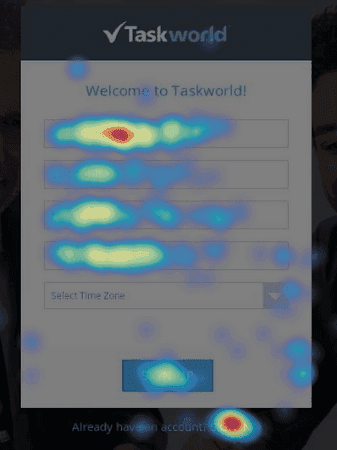
Source: https://www.hotjar.com/blog/cart-abandonment-stats/
b. Hidden costs
Another reason for high cart abandonment rates is hidden costs. For example, if delivery costs are not transparent until the end of the checkout process, users will be more likely to abandon their charts.
According to Baymard Institute’s research, 48% of visitors abandon their charts due to hidden costs.
To reduce the cart abandonment rate, strive to make all additional costs, such as tax and shipping, visible on your product pages and throughout your store.
c. Required account creation:
Requiring account creation complicates the checkout process, and complex checkout accounts for 18% of cart abandonments.
However, as account creation promotes customer loyalty, you should not leave it out altogether. Instead, you can offer account creation after the purchase.
d. Payment options
Many customers do not trust eCommerce websites enough to provide credit card information. Adding other payment options like PayPal may reduce cart abandonment rates.
Bonus tip: Send an email.
Customers who abandon carts are warm leads. As such, you can remind them of abandoned charts by sending automated emails. The statistics confirm the effectiveness of this strategy: emails sent to users have a 100% higher chance of being opened than other mail.
3. Click-Through Rate
The click-through rate is the proportion of clicks on a particular link to the total number of times a page, email, or advertisement is displayed, calculated by the following formula:
(clicks/ views) x 100
Tracking click-through rates is essential when evaluating the success of your marketing campaigns. It gives you insight into the effectiveness of your messaging by providing data on what percentage of people click on your links, CTAs, ads, and other promotion channels.
4. Traffic sources
Tracking your traffic sources gives you insights into your WooCommerce store’s marketing effectiveness across different channels.
It lets you focus on growing the passive and improving your hot channels.
For example, if the percentage of customers finding your store through search engines is below average (33%, according to Statista), you may consider optimizing your store for search engines.
5. CAC (Customer Acquisition Cost)
Customer acquisition cost measures how much you can acquire new customers. CAC is calculated using the following formula:
The budget spent on marketing/the number of new customers
Calculating CAC enables you to evaluate the return on investment of your ads, the effectiveness of your customer acquisition process, and the amount of investment needed to acquire a new customer.
This data allows you to make more effective marketing strategies and budgeting.
TIP: Continuously monitor and analyze key metrics.
Tracking key performance indicators is a continuous endeavor.
To maximize your conversions (sales), you should continuously monitor your KPIs, optimize your site to ensure optimal conversion, and evaluate how your changes affect conversion rates.
How to Improve Conversion Rates?
Now that we’ve outlined how to track your WooCommerce conversion rates and essential metrics to focus on, we will explore some of the ways to improve your store’s conversion rates.
The most common methods of improving conversion rates include:
1. Improve Product Pages
Product pages serve as your storefront, enabling potential customers to find and buy your products. To get the most out of your product pages, do the following:
a. Optimize text content for customers and search engines.
When writing product page text content, optimize it for both potential customers and search engines.
Write concise, unique, detailed product descriptions that resonate with your target audience. Do keyword research and include adequate keywords in your titles and descriptions to rank higher on SERPs and enable more potential customers to find you.
Don’t neglect writing meta descriptions. As a summary of your product page content, they are the first thing potential customers will see when they come across your product page on a search engine result page. Keep meta descriptions concise ( 50-160) to avoid search engines cutting out the vital information.
b. Provide high-quality images.
Remember that your customers cannot physically see and try your product. Strive to compensate for that.
Include high-quality pictures of your products from multiple angles, and add zoom-in functionality.
Providing high-quality images will convey professionalism and reliability and potentially lead to an increase in conversion rates.
Finally, optimize your images for performance and search engines. To optimize images for performance, use compression methods that reduce image size while retaining quality. Name images adequately and write concise and descriptive alt texts to optimize them for search engines.
c. Prioritize user experience
Optimizing your WooCommerce store user experience(UX) means making your site as easy to use and navigate as possible.
Ensure there are as few steps between your customer finding a product and the checkout phase as possible.
As a general rule of thumb for simplifying your store’s navigation, ensure that your categories and products are at most two clicks away.
In addition, consider adding a search bar to your menu and filtering systems to enable users to quickly find products they are interested in.
2. Improve Other Pages
Although product pages are central, focusing on other pages positively influences your conversion rates.
Write an engaging about page, terms and conditions page, return policies page, and contact page. Consider adding a blog to promote your products further.
The About page should convey your brand message and resonate with your target audience.
The terms and conditions page and return policies should make your business more transparent and convey reliability.
The Contact page should enable customers to contact you directly through multiple channels.
3. Improve Loading Speed
Page loading time is one of the most critical factors influencing conversion rates. According to 2022 Portent’s study, a website that loads in one second or less has 300% more visitors than a website that loads within 5 seconds. On the other hand, eCommerce bounce rates increase from 6% to 38% when page loading times increase from 2 to 5 seconds.
Website performance influences conversion rate by affecting user experience and search engine ranking. Users are less likely to spend time on websites with suboptimal performance and make a purchase. On the other hand, search engines rank loading times as part of user experience ranking: sites with optimal performance will rank better.
If you are experiencing high bounce and cart abandonment rates, carefully evaluate your website performance and focus on improving it if it is suboptimal.
To optimize your WooCommerce site loading times, compress images, focus on optimizing your code base, enable caching, and regularly monitor your site’s performance. As optimizing your eCommerce site requires technical expertise, consider relying on professional WooCommerce development services if you do not have an in-house development team.
4. Conducting A/B Testing
A/B testing is an essential component of the CRO process. It consists of creating two versions of one of your WooCommerce store elements and evaluating their influence on conversion rates.
For example, you can use A/B testing to assess the effect of a product page redesign on your conversion rates.
To conduct A/B testing:
- Set a goal (for example, to reduce cart abandonment rate)
- Assess your website problems
- Make a hypothesis
- Create a solution
- Test the solution by splitting your traffic into two groups and evaluating its effectiveness.
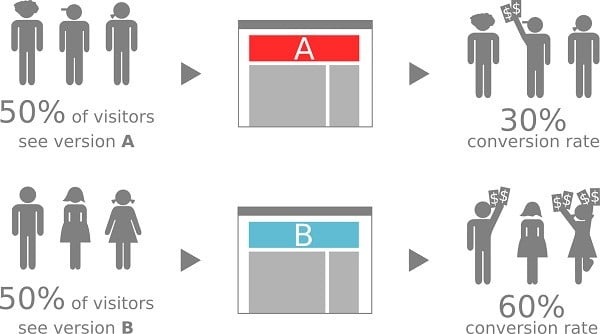
src:https://neliosoftware.com/blog/how-to-create-a-b-tests-in-your-woocommerce/
5. Add Social Proof
Social proof represents the human tendency to emulate the group’s behavior. In eCommerce, customers are more likely to purchase products that others have bought and rely on other customer’s reviews.
As a WooCommerce business owner, you can leverage social proof in the following ways:
1. Reviews:
Reviews are a central part of the online shopping experience. According to North Western’s Medill Spiegel Research Center study, a product with five reviews will have a 270% higher conversion rate than a product without customer reviews.
You can install some of the customers’ review plugins for WooCommerce, such as Customer Reviews for WooCommerce, to enable your customers to post reviews.
You can also send automated follow-up emails encouraging your customers to post reviews to increase the number of reviews.
2. Testimonials:
Customer testimonials are different than product reviews. Positive customer reviews are displayed prominently on your website, usually on the homepage.
Similar to customer reviews, testimonials serve as social proof, which may increase the conversion rate.

Src: MANE Digital, screenshot
3. Scarcity:
Finally, you can leverage social proof using scarcity. For example, you can add the number of remaining products on your product page, increasing conversion by encouraging visitors to buy a product while it is still in stock.
Summary
In this article, we covered the essentials of WooCommerce conversion rate tracking.
We advised you to use MonsterInsights to integrate Google Analytics into your WooCommerce store and enable more convenient tracking.
We also outlined the essential metrics to follow and provided tips on improving conversions based on the data.
However, if you have any additional questions or need help with Conversion Rate Optimizations, contact us through our website or email us at hello@manedigital.com, and we will do our best to assist you.



